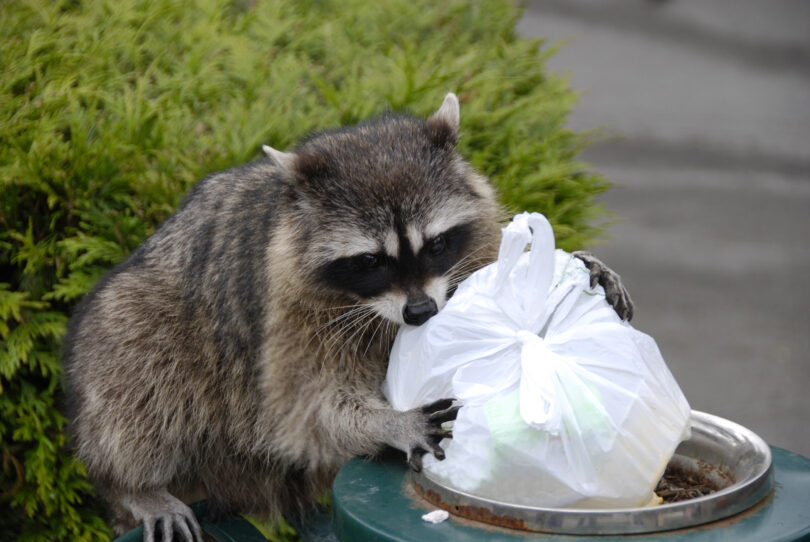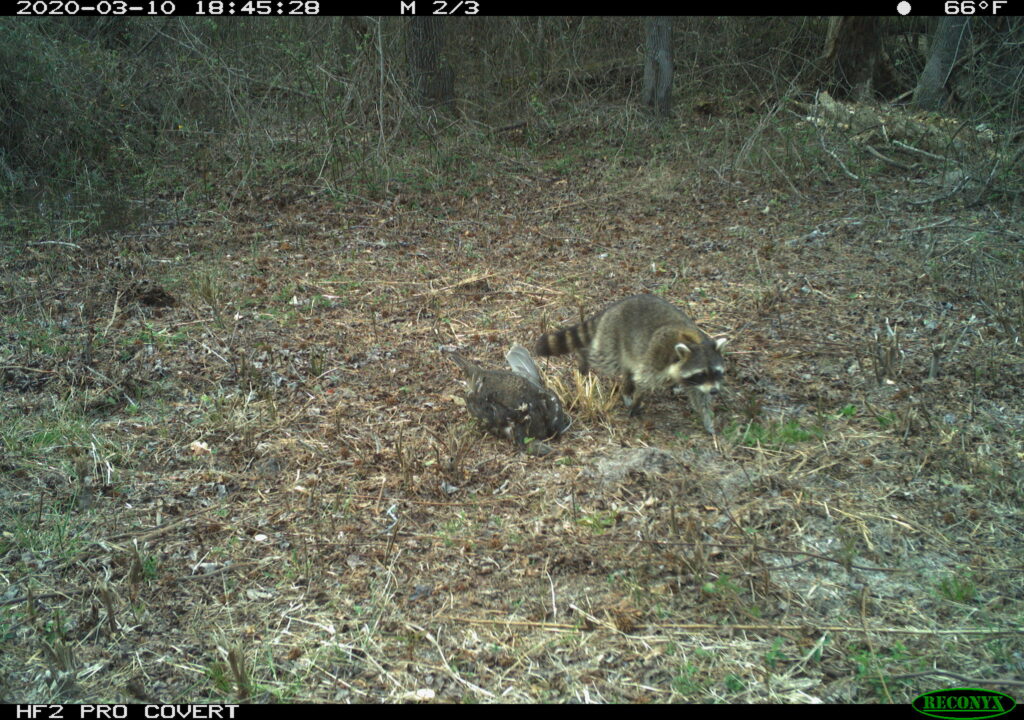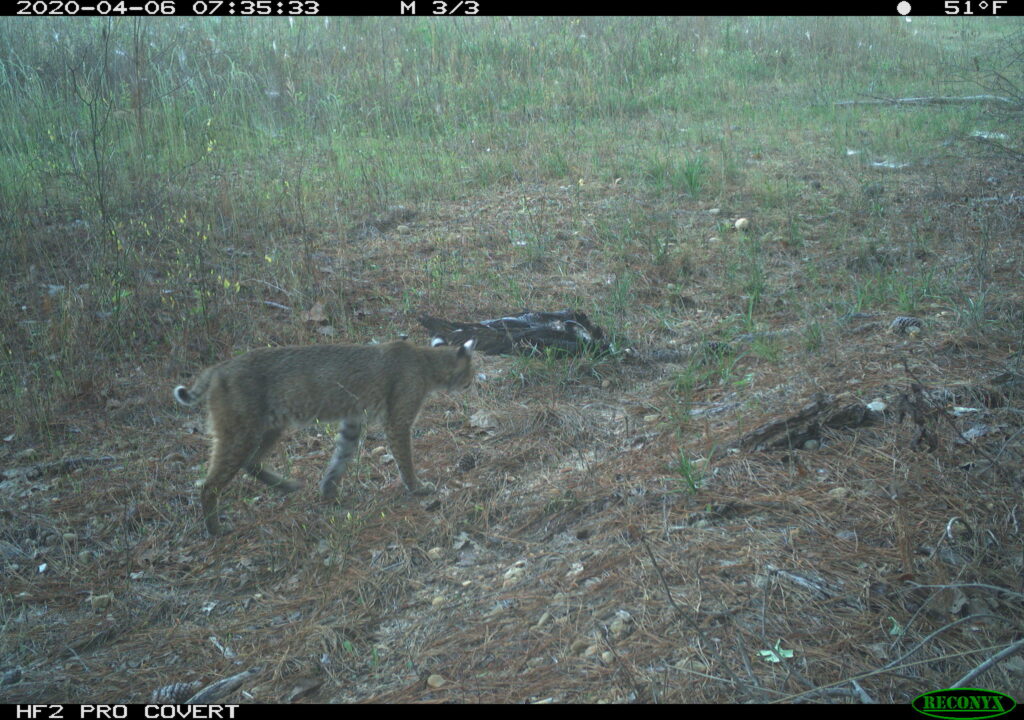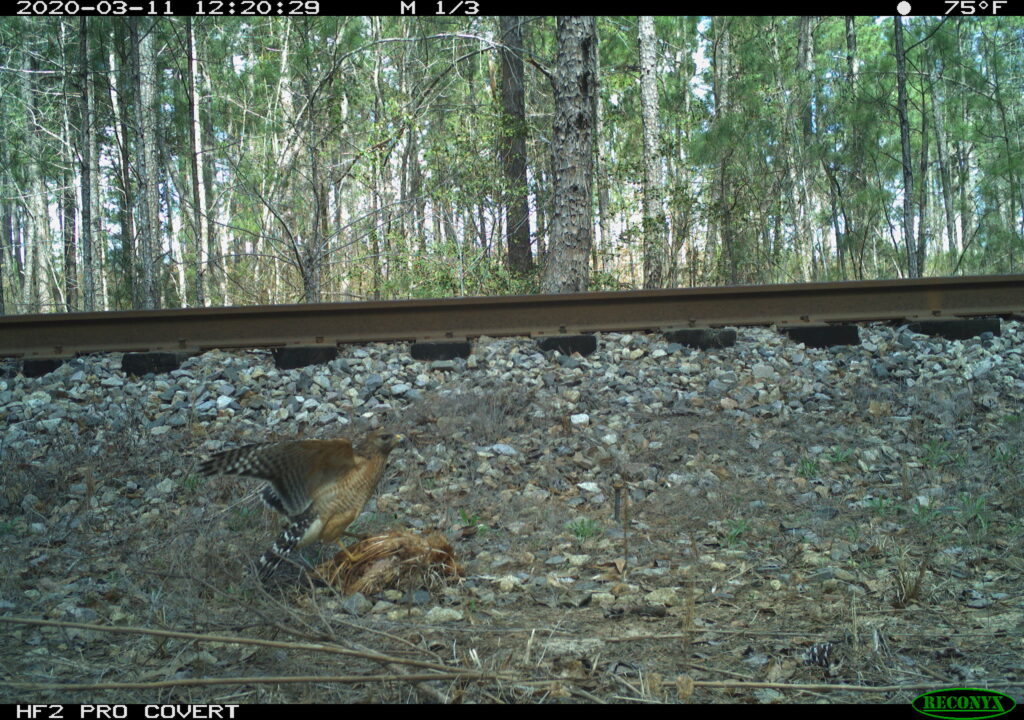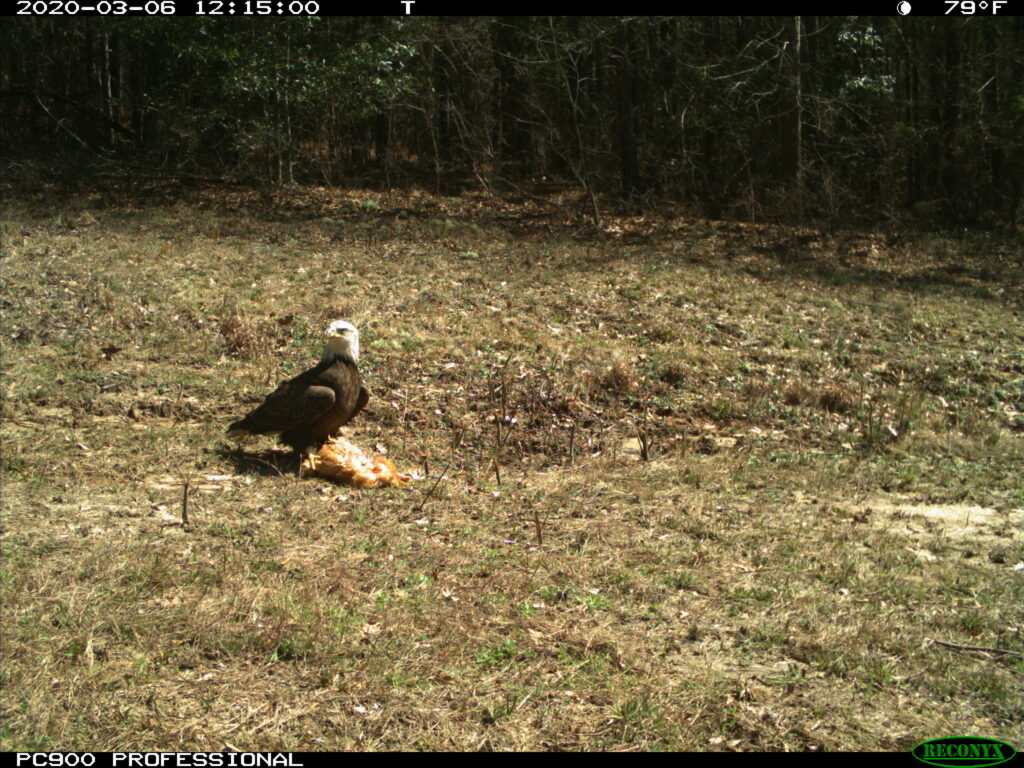Birds and mammals preferred to dine on the carcasses of herbivores
When you picture a finicky eater, a raccoon doesn’t usually come to mind. But new research from the University of Georgia revealed that scavengers, such as raccoons and vultures, can be selective about what they eat. The study provides insight into how nutrients can cycle through food webs.
When several types of carcasses were available, avian and mammal scavengers chose those of herbivores, such as ducks and chickens, rather than the carcasses of carnivores.
Miranda Butler-Valverde, lead investigator on the study, published in Food Webs, set up remote cameras on the heavily forested Savannah River Site near Aiken, South Carolina. Then Butler-Valverde, a recent graduate of the Savannah River Ecology Laboratory and the Warnell School of Forestry and Natural Resources, placed avian carcasses of different trophic levels in the area.
Trophic levels refer to placement on the food chain. A food web starts at trophic level 1 with primary producers such as plants. Herbivores are at level 2, and carnivores are at level 3 or higher.
She placed 40 herbivore carcasses—20 chicken and 20 mallard ducks—along with the carcasses of 20 black vultures and 19 turkey vultures on the landscape
Motion-triggered, time-lapse photos taken every five minutes for over a month revealed that scavengers, including coyotes, crows, bald eagles and wild pigs, totally consumed the carcasses of the chickens and ducks.
The cameras revealed that less feasting occurred at vulture carcasses. Scavengers, including coyotes and Virginia opossums, consumed only 10 of the 39 vulture carcasses, five of each species. A few scavengers tasted or partially scavenged vulture carcasses.
Scavenger behavior reveals animals may be avoiding disease
According to Butler-Valverde, now a wildlife technician at Santa Fe National Forest in New Mexico, the fate of these carcasses provides insight into how nutrients can cycle through food webs.
“The vulture carcasses, that were not scavenged or were only partially scavenged, were on the landscape for a longer period of time,” said Butler-Valverde. “This means the microbial and invertebrate communities were likely able to take advantage of the reduced competition and lack of disturbance at these carcasses. After the carcasses decomposed, nutrients would have most likely been deposited into the soil and plant communities located in the vicinity of the carcasses.”
Insects and microbes often miss the opportunity to access nutrients from carcasses when scavengers arrive quickly and consume the bounty, according to the study.
In this case, the vertebrates at the higher trophic level did arrive at the buffet early, obtaining nutrients from lower-level carcasses, but since the majority of the vulture carcasses remained on the landscape, an ecosystem balance occurred in the food web when everyone got something or someone to eat.
From a human perspective, one might expect the scavengers to choose the tastier meal, but the researchers believe there is more than the scavengers’ palates or taste buds at play.
James Beasley, professor at SREL and Warnell and a co-author on the study, said the scavengers could be avoiding disease risks.
“Scavengers are most often predators and higher trophic-level species, and by scavenging similar species they may be more likely to be exposed to pathogens that they can be susceptible to,” Beasley said. “So carnivores might be less likely or unwilling to scavenge other carnivores to reduce their exposure to pathogens.”
The study reports that what these animals ate when they were alive could have influenced the scavengers’ decision to dine or not dine on them. Chickens and mallard ducks are herbivores. Vultures are primarily sustained by the carcasses of dead animals, so the nutritional value of the carcass types differ.
Camera images show that cannibalism occurred. Turkey vultures feasted on vulture carcasses, but the study notes most of these scavengers were immature, like toddlers who have yet to learn what is appropriate to eat.
Coyotes were the most frequent scavengers, followed by Virginia opossums. Coyotes scavenged all carcass types, but frequently visited vulture carcasses that they did not scavenge. Butler-Valverde acknowledges that this behavior can be a result of a scavenger not being hungry at the time, assessing the situation to return later and being cautious of predators who might be nearby.
The team’s research supports previous findings that fewer vertebrate species scavenge higher trophic-level carrion, but Butler-Valverde emphasized that scavenging ecology is a relatively understudied research area. She said researchers should investigate further across the ranges of the two vulture species to pinpoint scavenging patterns and implications.
Travis L. DeVault, associate director and senior research scientist at SREL and adjunct faculty at the Warnell School, is also a co-author on the study.


